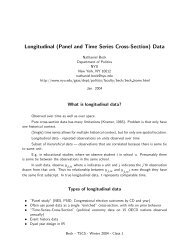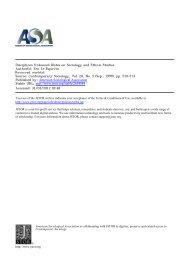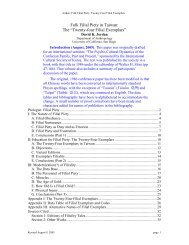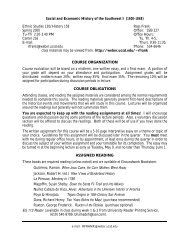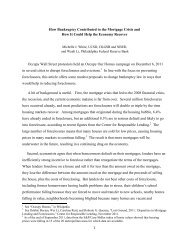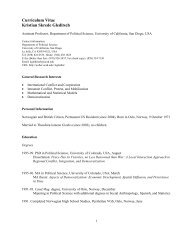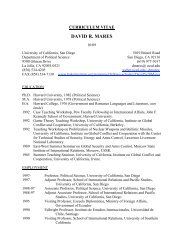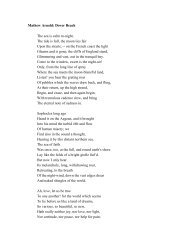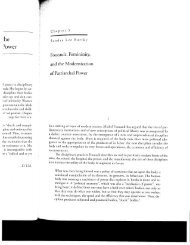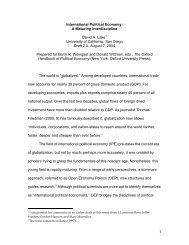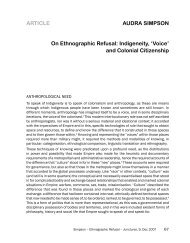Climate change and water resources in the Murray Darling Basin ...
Climate change and water resources in the Murray Darling Basin ...
Climate change and water resources in the Murray Darling Basin ...
Create successful ePaper yourself
Turn your PDF publications into a flip-book with our unique Google optimized e-Paper software.
ABARE CONFERENCE PAPER 02.11<br />
A study conducted by Hassel <strong>and</strong> Associates (1998) estimated <strong>the</strong> impact of high <strong>and</strong> low<br />
climate <strong>change</strong> scenarios on surface <strong>water</strong> runoff <strong>in</strong> <strong>the</strong> Macquarie–Bogan catchment of<br />
New South Wales. The study used a Sacramento model (Burnash, Ferral <strong>and</strong> McGuire<br />
1984) that <strong>in</strong>corporates <strong>change</strong>s <strong>in</strong> potential evaporation to estimate catchment runoff.<br />
Runoff was <strong>the</strong>n used to generate stream flows that were calibrated us<strong>in</strong>g <strong>the</strong> IQQM daily<br />
flow model (New South Wales Department of L<strong>and</strong> <strong>and</strong> Water Conservation 1995). The<br />
Sacramento model generated <strong>change</strong>s <strong>in</strong> stream flows that were approximately three times<br />
greater that would be predicted us<strong>in</strong>g <strong>the</strong> Holmes–S<strong>in</strong>clair relationship.<br />
Given <strong>the</strong> likely sensitivity of <strong>the</strong> analysis to <strong>the</strong> <strong>in</strong>corporation of potential evaporation,<br />
<strong>the</strong> Holmes–S<strong>in</strong>clair evapotranspiration relationship used <strong>in</strong> <strong>the</strong> SALSA model was modified<br />
to account for <strong>change</strong>s <strong>in</strong> potential evaporation. The relationships for tree <strong>and</strong> grass<br />
covered catchments provided <strong>the</strong> envelope for all o<strong>the</strong>r groundcovers used <strong>in</strong> <strong>the</strong> SALSA<br />
model. (The relationship between precipitation <strong>and</strong> evapotranspiration for all o<strong>the</strong>r groundcovers<br />
was specified as a l<strong>in</strong>ear comb<strong>in</strong>ation of <strong>the</strong> relationships for trees <strong>and</strong> grass.)<br />
The relationship for tree cover was specified as:<br />
(1)<br />
where<br />
<strong>and</strong> ppt is average annual precipitation, α is a parameter, PE is potential evaporation <strong>and</strong><br />
t denotes time <strong>in</strong> years. The relationship for grass cover was specified as:<br />
(2)<br />
⎛ ∆2800⎞ ⎛ ∆2800<br />
ppt ⎞<br />
ETTrees = ppt⎜1<br />
+ ⎟ ⎜1<br />
+ + ⎟<br />
⎝ ppt ⎠⎝<br />
ppt ∆400⎠<br />
∆= 1 + α PEt<br />
PE<br />
⎛ ∆2200⎞ ⎛ ∆2200<br />
ppt ⎞<br />
ETGrass = ppt⎜1<br />
+ ⎟ ⎜1<br />
+ + ⎟<br />
⎝ ppt ⎠⎝<br />
ppt ∆1100⎠<br />
An α of 0 gives <strong>the</strong> orig<strong>in</strong>al Holmes–S<strong>in</strong>clair specification <strong>and</strong> a value of 1.0 provided a<br />
reasonable fit to <strong>the</strong> runoff relationships generated by <strong>the</strong> IQQM model <strong>in</strong> <strong>the</strong> Macquarie–<br />
Bogan catchment. An α value of 1.0 was used for <strong>the</strong> simulations conducted <strong>and</strong> reported<br />
here. A simulation us<strong>in</strong>g <strong>the</strong> orig<strong>in</strong>al Holmes–S<strong>in</strong>clair specification is reported <strong>in</strong> appendix<br />
A for comparison.<br />
The second hydrological component of <strong>the</strong> model determ<strong>in</strong>es surface <strong>water</strong> runoff <strong>and</strong><br />
ground <strong>water</strong> recharge. The distribution of <strong>the</strong> excess between surface <strong>and</strong> ground <strong>water</strong><br />
recharge is assumed to be a constant proportion. For example, on heavier, less permeable<br />
soils on <strong>the</strong> steeper terra<strong>in</strong> of <strong>the</strong> upl<strong>and</strong> catchment areas, ground <strong>water</strong> recharge fractions<br />
range from 10 to 30 per cent. On <strong>the</strong> s<strong>and</strong>ier, more permeable soils on flat terra<strong>in</strong> <strong>in</strong> <strong>the</strong><br />
low ly<strong>in</strong>g catchment areas, recharge fractions were between 80 <strong>and</strong> 100 per cent.<br />
15<br />
t = 0<br />
−1<br />
−1




